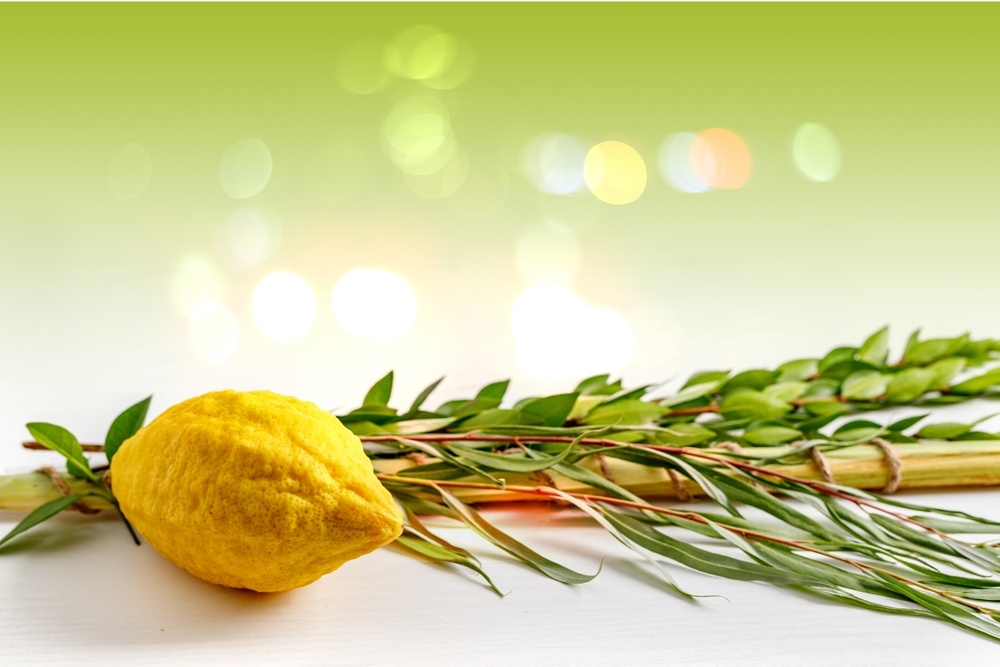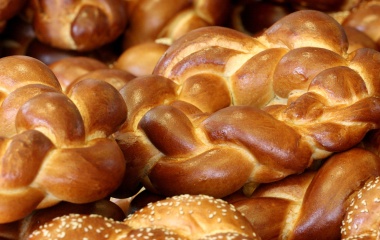
The opening Mishna of masechet menachot teaches that just because one lacks proper intent when slaughtering an animal, the korban remains valid (though the person offering the korban has not fulfilled their obligation and would have to bring another korban). In other words, the slaughtering does not impact on the other aspects of the korban (see here for further discussion).
However, there are many mitzvoth where each part forms such an integral aspect of the mitzva that even if just one part of the mitzva is missing or done improperly, the entire mitzva is lost.
First on the list of these mitzvot are “the two goats of Yom Hakippurim” (Menachot 27a). One cannot attain atonement with one goat unless one also offers the other goat as a sacrifice to G-d. Others on the list include the “two lambs of Shavuot, the two loaves [that accompany the lambs], the two rows [of the showbread] the two dishes [of frankincense], the rows and the dishes [of the weekly showbread], the two kinds [of cakes] used in the offering of the Nazirite (Bamidbar 6:15), the three species used for the red cow (Bamidbar 19:6), the four kinds [of cakes] used in the thanksgiving offering (Vayikra 7:12)”. In all the above the mitzva consists of multiple parts each of which must be done properly.
What all the above have in common is that they relate to the Temple service. The Mishna continues with “the four kinds used for the [purification of the] leper (Vayikra14:4), the seven sprinklings [of the blood] of the red cow (Bamidbar 19:4), the seven sprinklings between the poles of the ark and of those toward the curtain and upon the golden altar [on Yom Kippur], the [absence of] one invalidates the others” (Menachot 27a)
There is however one other mitzva which I skipped that is found in between the two paragraphs listed above, namely, “the four species of the lulav”.
Why are the four specifies of the lulav placed in the midst of these many mitzvot relating to the Temple? This is even more perplexing when one considers that the very next Mishna (Menachot 28a) lists those non-temple mitzvoth where “one missing part invalidates the rest”, namely, tefillin and mezuzah. Why not list the lulav in this grouping of non-Temple mitzvoth?
The inescapable conclusion is that the four species—and, as we will demonstrate, Sukkot as a whole—is in fact a mitzva relating to the Temple.
It was only in the Temple that the mitzva to take the lulav is for all seven days of Sukkot. Our practice to do the same was instituted after the destruction of the Temple as part of a series of ordinances in order to remember the glory of the Temple.
It was only in the Temple where there was the mitzva of arava, of placing long willow braches on the side of the altar which was then circled by the kohanim, once each day and seven times on the last day—known in the Mishna as “Yom hashevi'i shel arava.” This was accompanied by blowing of the shofar, a custom maintained today in many chassidic circles where the shofar is blown in between the hakkafot on what we now call Hoshanna Rabba.
Also specific to the Temple is the mitzva of nisuch hamayim, the water libations on the altar. It is on Sukkot, the beginning of the rainy season, when we are most cognizant of the need for rain and the nisuch hamayim served as a prayer for rain—one we do today on Shmini Atzeret[1]. The water libations were celebrated with great joy—all night “partying” with jugglers, dancing, music and songs of praise and thanksgiving. The detailed description of the simchat beit hashovea, the joy of drawing the water, makes no mention of the sukkah, leading one to conclude that in the Temple there was no need for a sukkah. As the Temple served as a sukkah, our sukkah serves as our own miniature Temple.
But it is not just nisuch hamayim, arava and the four species that demonstrate the centrality of the Temple on Sukkot.
More korbanot were brought on Sukkot than any other holiday[2]. Shlomo Hamelach’s dedication of the Temple coincided with Sukkot, the details of which we read in the haftarot of the holiday.
Even the construction of the sukkah takes its cue from the Temple. The minimum height for the sukkah—10 tefachim, handbreaths, is derived from the fact that the keruvim, cherubs, stood at a height of 10 tefachim. The keruvim protected the covering of the aron with their wings that were סֹכְכִ֤ים בְּכַנְפֵיהֶם֙, a biblical allusion to the skach, which serves as “shade from heat by day and as a shelter for protection against drenching rain” (Yishayahu 4:6).
Sukkot, parrallel the Temple, is the holiday of Jewish unity. ‘“Kol haezrach bYisrael, all the inhabitants of Israel, shall dwell in the sukkah’—this teaches that it is appropriate for all of Israel to sit in one sukkah[3]” (Sukkah 27a). Sukkot is the holiday where “the men, women and children” gather together for the hakhel ceremony. And it is the holiday where we take the four species of the lulav, representing four very different types of Jews—each of whom is integral to the success of other. The absence of one weakens the others and hence the ruling of the Mishna that all four species are needed in order to have any.
Historically, Sukkot celebrates our journey to the land of Israel. Establishing a State requires people of diverse views coming together with a shared vision and a common set of values.
We no longer have a Temple. We did not live up to the message of Sukkot and instead of unity we had hatred. We were weakened spiritually and physically and the Temple had lost all meaning. When Rav Yochanan ben Zackai had the opportunity to possibly save the Temple from destruction he declined, choosing to focus his efforts on starting over at Yavneh, absent a Temple (Gittin 56b). With the Temple no longer a unifying force there was little to save beyond some building material.
The sukkah is a flimsy hut, lacking aesthetic beauty and offering little protection. But if it serves as a vehicle to bring people together it is more beautiful that the most elaborate Temple that is fought over[4]. May we merit the sukkah of peace spread over the people of Israel and the world at large.
[1] In theory, we should offer the prayer for rain during Sukkot but since that would force us out of the sukkah we wait until Shmini Atzeret to do so.
[2] See here for an explanation as to why.
[3] Of course it is physically impossible for all of Israel to sit in one sukkah; rather, every Jew must be welcome in every sukkah.
[4] Many of the battles between the Sadducees and the Pharisees related to the Temple service in general and Sukkot in particular. The Sadducees rejected both the mitzva of arava and nisuch hamayim as neither were mentioned explicitly (and maybe even implicitly) in the Torah. The Mishna (Sukkah 48b) relates that when a Sadducee high priest poured the water on his feet a riot broke out, and he was pelted with etrogim.
Sadly, the Mishna describes another “riot” when Sukkot fell on Shabbat and people (who accepted rabbinic law) had to bring their lulavim to the Temple before Shabbat. When the time to take the lulavim came, the pushing and shoving was so bad that the when the “Beit Din saw that they would come to danger, they established that each person should take the lulav in his own house.” (Sukkah 42b).



